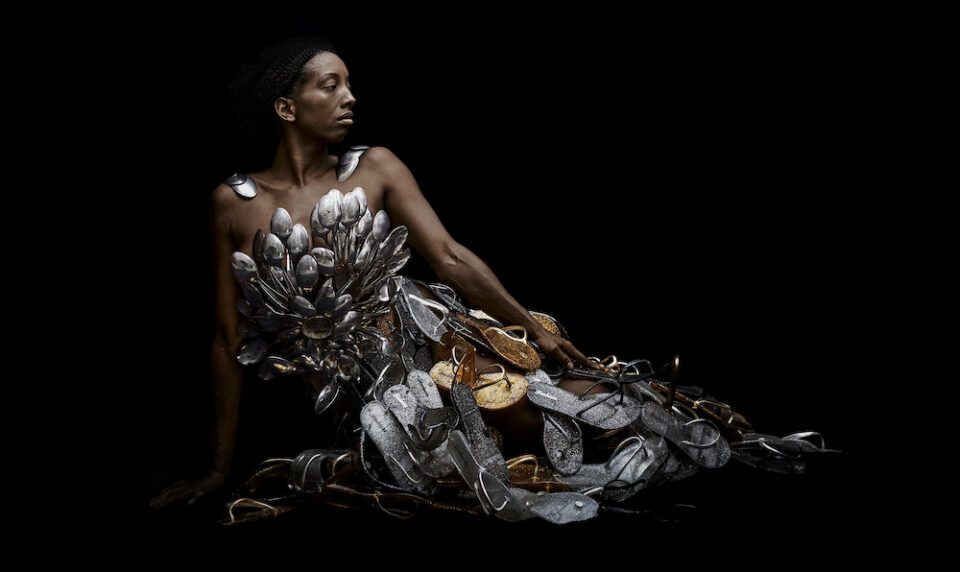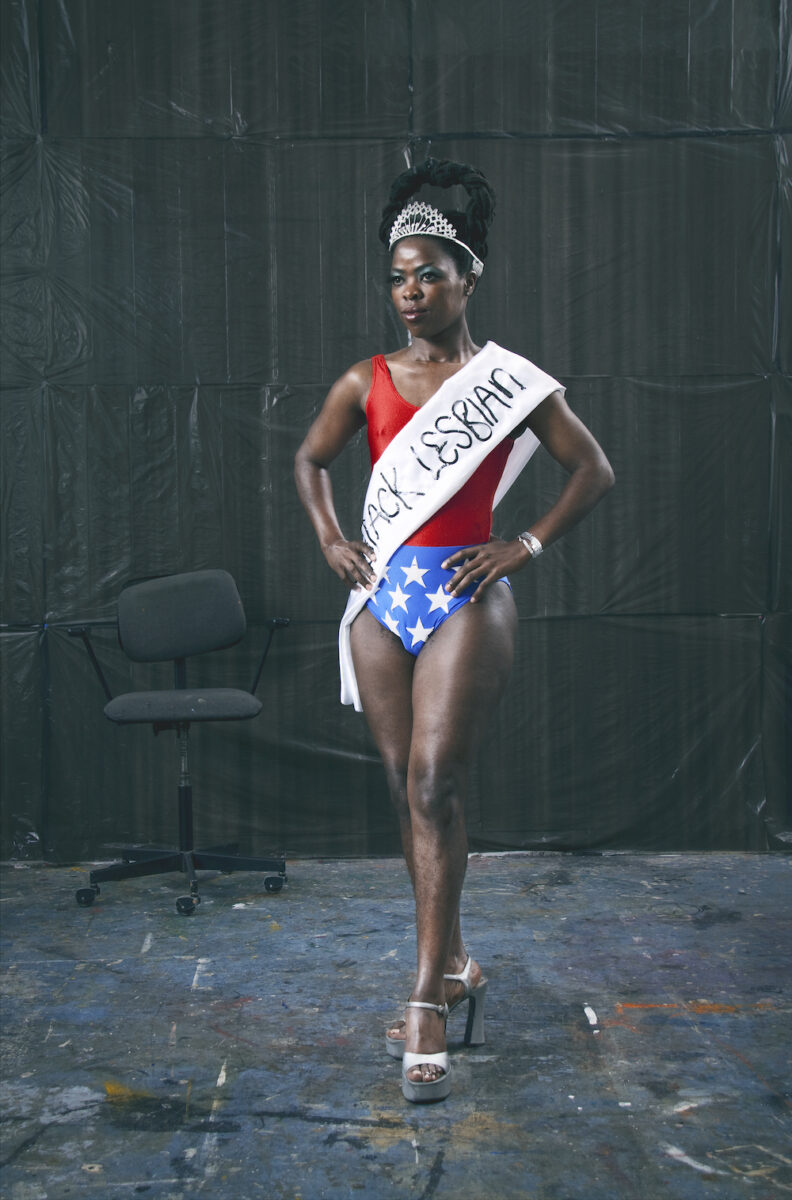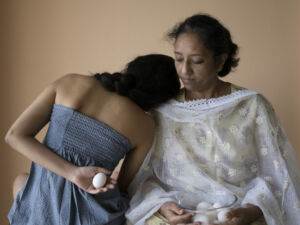“It’s as if we’ve been looking at the world with blinkers,” observes Aindrea Emelife, a London-based art historian, author and curator who sits on the Mayor of London’s Commission for Diversity in the Public Realm. Her latest show, BLACK VENUS is at Fotografiska New York before touring internationally. The exhibition charts a visual history of Black women in art and culture – from colonial depictions to contemporary works by Black female-identifying and non-binary photographers. These artists, including Deana Lawson (b. 1989), Ayana V. Jackson (b. 1977) and Zanele Muholi (b. 1972), are reclaiming the lens. Emelife discusses curation and why the art world is going through an “exciting period of renewal.”
A: The show’s title, BLACK VENUS, alludes to the Hottentot Venus. Tell us about the real woman behind the archetype and how this still plays out in visual culture?
AE: Sara Baartman was a South African Khoikhoi woman who, from 1810 to 1814, was toured in the UK and Ireland as a freak-show attraction named the “Hottentot Venus.” She was part of a human menagerie with buttocks of enormous size and with genitalia fabled to be equally disproportionate. When she arrived in London in 1810, this young woman from South Africa became an overnight sensation in London’s theatre of human oddities. Her body was the object of the prurient gaze, scientific fascination and disturbed bewilderment. She died of smallpox at the end of 1815. A cast was made of her body after her death and her skeleton and organs were preserved by the anatomist Georges Cuvier; her remains were returned to South Africa in 2002. The legacy of this sexualisation, exoticisation and fetishisation lingers on in contemporary culture. We see it in the representation of Black women in music video history – the dawn of the music “video vixen” and the reclamation of Black female sexuality and agency by stars such as Megan Thee Stallion. How we see humanity, and how we understand the history of our existence in visual culture shapes contemporary understanding. How Black women have been depicted – whether omitted or shoehorned into narrow stereotypes – allows us to understand the socio-political gaze and its evolution over time. Art and visual culture help form stereotypes, but it can also be a source of liberation.

A: It seems there is a flourishing in artistic portrayals of Black women and their experiences currently. What’s behind the shift? Do you feel optimistic that is is permanent?
AE: I am optimistic of permanency because the shift is happening not just on museum walls, but within the institutions themselves. Curators, directors, writers, gallerists – those who occupy these spaces are changing too. There is an appetite for new ideas and perspectives – and this can only continue if the decision-makers reflect those values and provide new ways of looking at art and artists we thought we already knew. Social media and social movements are so vital. The past few years has fast-forwarded a revolution in our understanding of the importance of what we see, where, how and who tells the story. To live in a better world, we must understand ourselves and others.
A: Your exhibition puts contemporary photography in context, tracing the history of misrepresentation of Black womanhood that these artists are working against with archival images dating back to 1753. Was that your curatorial starting point?
AE: Definitely! I hope it highlights the expanse of Black womanhood. We cannot treat it as a monolith – this was key in the selection of artists, which range in generation, including non-binary voices, and has an international scope. I hope it also highlights the deliberate erasure of Black women in art history and history. Working on this show was a fascinating period of homecoming and self-interrogation, as well as academic research. Working with the Getty’s Black History and Culture Collection reignited my long-standing appreciation for excavating archives. I made a short film based on photographs in their archive, which was a personal narrative and ode to the Black woman, as well as a nod to the idea of the curator as an conservator for “the archive”, but also a refashioning of the past into a missive for the future.


A: Can you give some insight into your research and development process for the exhibition? Who or what were the inspirational touchstones for you?
AE: The exhibition actually began in my mind, many years ago. I was fascinated by the history of the Hottentot Venus, which my mother introduced to me when I was quite young. Since then, art history has become a lens for me to understand myself, as a Black woman. I was intrigued by the lack of and narrow stereotypes applied to us in art and looked for a more expansive art history. The ideas for this exhibition took on greater urgency after I discovered Thomas Stothard’s Vogue of the Sable Venus (circa 1800). Then, I fell into a deep research period, spanning the presence of Black women in sculpture, entertainment, visual and pop culture, which in contrast, showcased real gaps in the academia for this topic. Writings and scholarship by Deborah Willis were invaluable, as such an authority on the representation of the Black female body in photography. Denise Murrell’s Posing in Modernity book, as well as her enlightening Le Model Noir exhibition at the Musee D’Orsay, was also a key inspiration, as her radical interventions into wall texts, reclaimed the agency of Black female sitters with their original names. Thelma Golden’s Black Male exhibition was also incredibly important for reshaping and re-understanding the politics of the Black male and so, conversely, l drive a similar spirit in my passion and dedication to expanding this for Black women.
A: Were there certain artworks or artists you knew from the start had to be included in the show?
AE: When I embark on an exhibition idea, the artist list expands so much, as I undertake extensive research. Artists such as Carrie Mae Weems, Zanele Muholi, Mickalene Thomas and Deana Lawson were core, highlighted artists from the beginning. As a Brit, I wanted to ensure the narrative was international. I have a brilliant relationship with the Maud Sulter Estate, who was a Scottish-Ghanaian artist and cultural historian and presented an iconic work, Le Bijoux, in an entirely new way.
BLACK VENUS runs until 21 August at Fotografiska New York
Words: Rachel Segal Hamilton
Image Credits:
1. Ayana V. Jackson, Anarcha (2017), from the series Intimate Justice in the Stolen Moment Archival pigment print on German etching paper (ed. of 8 + 3 AP). 39.38 x 27.5 in.
2. Ayana V. Jackson, The Rupture Was The Story (2019), from the series Take me to the water Archival pigment print on German etching paper (ed. of 8 + 3 AP) 25.63 x 42.88 in.
3. Zanele Muholi, Miss Lesbian I, Amsterdam, from the series Miss (Black) Lesbian (2009)
Archival C-Print (ed. of 8) 30.13 x 19.88 in.
4. Zanele Muholi, Miss Lesbian II, Amsterdam, from the series Miss (Black) Lesbian (2009)
Archival C-Print (ed. of 8) 30.13 x 19.88 in.





